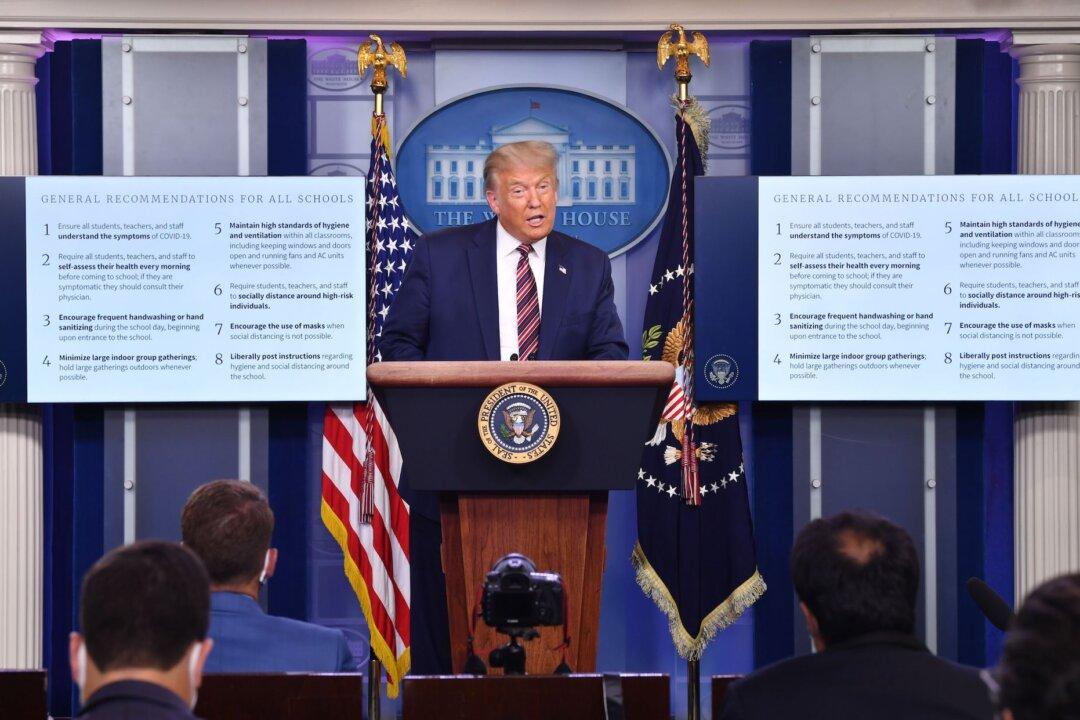President Donald Trump on Wednesday introduced a new White House adviser on the CCP virus and announced eight new recommendations for reopening schools.
Dr. Scott Atlas, a healthcare policy expert who is a Senior Fellow for the Hoover Institution at Stanford University, has recently begun working with the administration. Trump told reporters that Atlas is “a truly brilliant man, a wonderful man and cares about the subject” of reopening schools “very much.”




